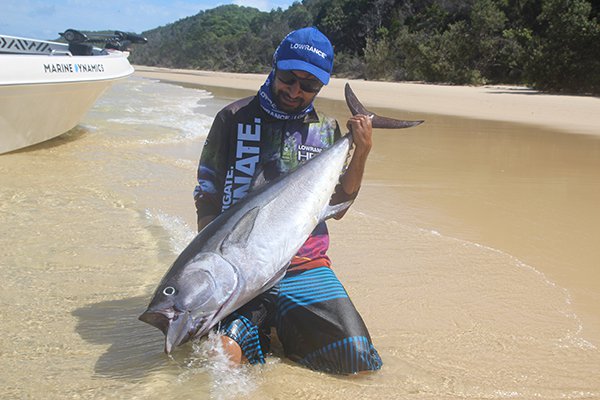
My local waterway of Moreton Bay becomes home to a variety of tuna from the end of summer through till winter. These fish are awesome fun to target as they are big and put up a great battle. They can also be extremely frustrating to chase, which makes it all the more rewarding when you do boat one! Generally the tuna will move in schools and work to concentrate the bait schools and push them to the surface, once they have achieved this, they will start feeding and this often results in explosive hits and general carnage all round! Of course it can be very difficult to get near the fish and they are often very spooky and fussy (Hence the frustration!)
I have had a successful season this year and have found some important keys to staying on the fish and getting yourself within a shot of catching one. Finding bait is the number one factor to finding these fish, if there’s no bait for them to feed on, they can be very hard to find. Some days, you will spot the surface action and you won’t have much trouble finding the fish, but other days it can take a lot of searching and guessing where the fish may turn up.
When I can’t find the fish, I look to my sounder. Firstly, look for bait! If the fish aren’t busting up on the surface, I look to the sounder and search for bait. If you can find a good concentration of bait, it is just a matter of time before the fish will turn up. Quite often a change of tide will bring them on and you will know exactly where that bait was sitting. Driving around the areas you have previously seen tuna or areas that seem likely while keeping close eye on your sounder screen will help you find those bait schools while the fish are quiet.
Another tip to help is to keep an eye on your GPS. Tuna will use channels and drop offs to their advantage to herd up the bait. Each trip I will set my trail as a different colour, this help me identify patterns from previous trips. Some days the fish will be feeding in the middle of nowhere and others they can be working a drop off edge, if you keep close of your GPS screen, you will start noticing patterns. If you can work out patterns that the fish are using, you can be one step ahead of the fish and often get yourself in the right position to make that perfect cast to the fish!









